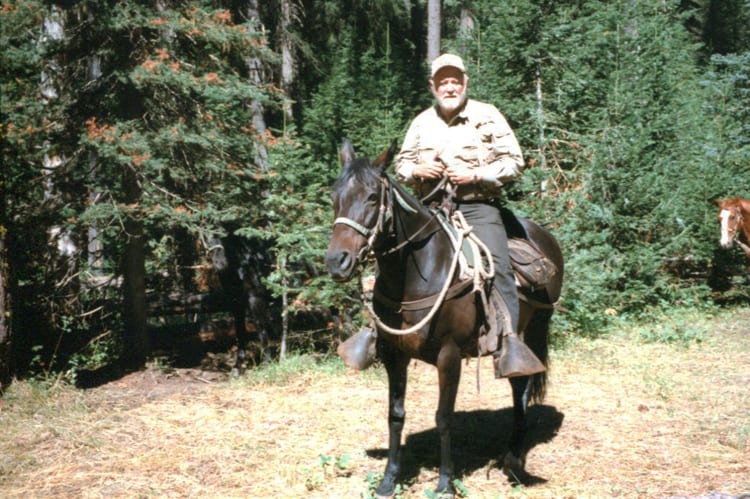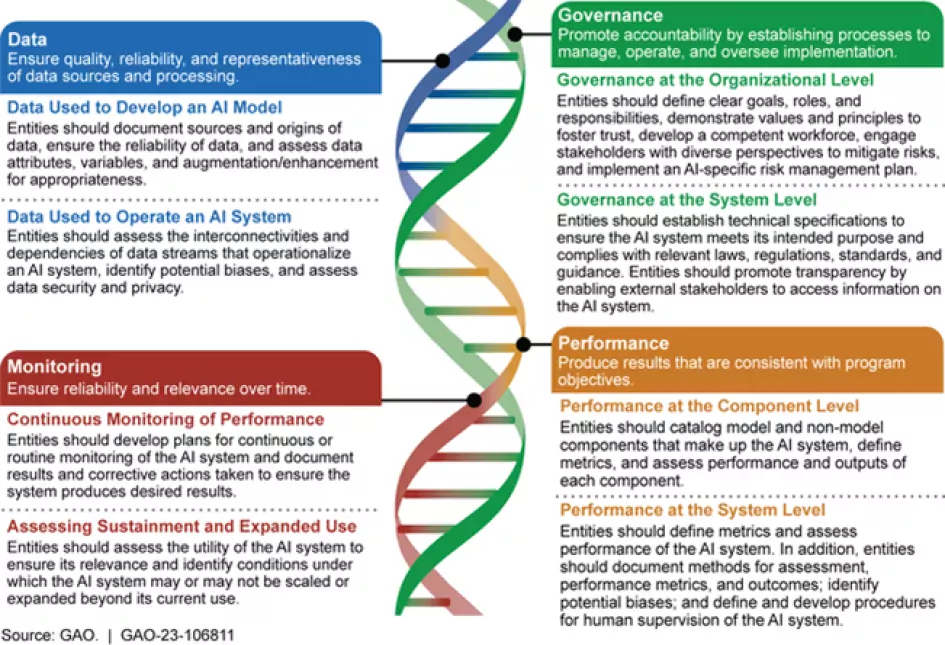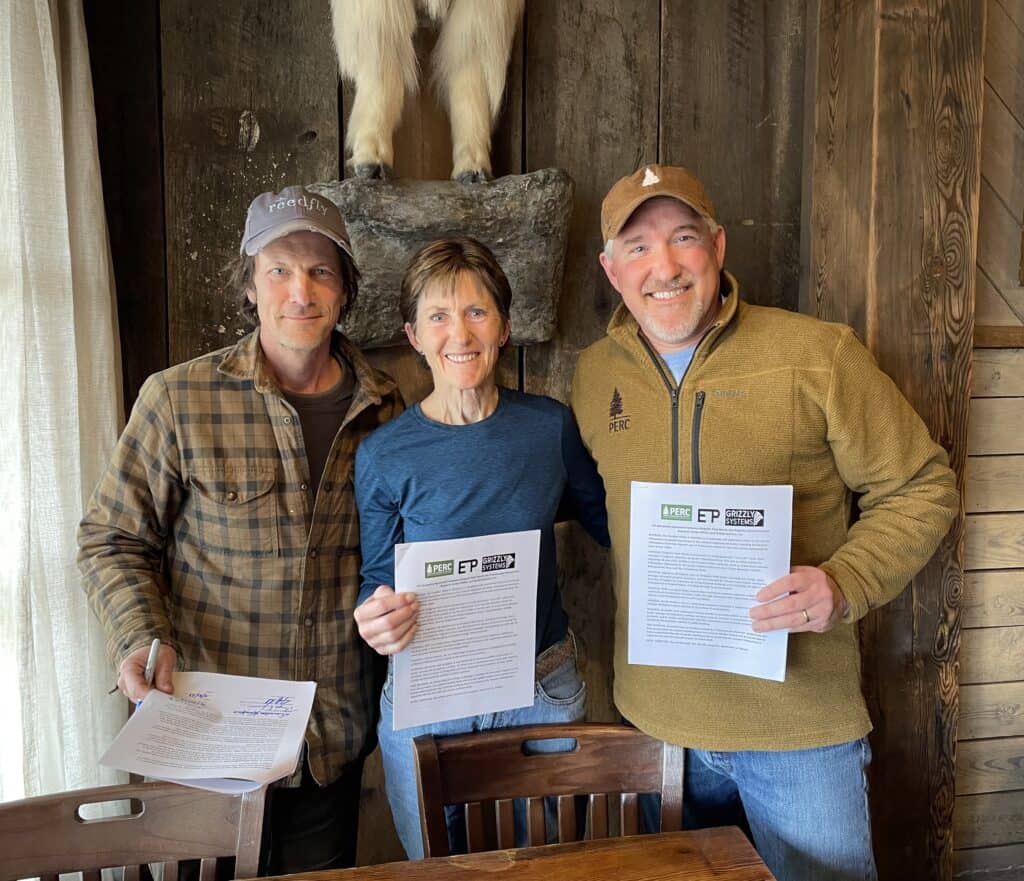Interesting stories about the National Old Growth Plan Amendment (NOGPA). Now at this point, I haven’t seen anything the FS has written about it, and The Smokey Wire was not granted an interview with the Secretary, but what can we pick up from these stories?
First a story from the Washington Post.
I give them 5 Smokeys (out of 5) for detailed description, not characterizing it as “timber vs. enviros” and pointing out the timing problem via Chris Wood, also what’s the immediate effect. All the things I wanted to know without any extraneous editorializing. If you agree, consider sending the reporter a nice note:
In a phone interview, Agriculture Secretary Tom Vilsack said the effort is the first time the U.S. Forest Service has proposed simultaneously revising all 128 of its forest plans, which dictate how all 193 million acres of forests and grasslands are managed. The plan would prohibit cutting down old-growth trees for economic reasons, preventing carbon-rich forests from being clearcut at a time when scientists say they are most needed. These trees, most of which are well over 100 years old, store vast amounts of carbon. They also provide an essential habitat for hundreds of species of wildlife and are more likely to survive wildfires.
Having examine the projects alluded to in the Carbon Forests initiative, I don’t think the FS was cutting down any old growth for economic reasons. Again, as I’ve asked many NGO’s, please send me a link to the project documents where this is occurring and we can have that discussion in detail.
But it leaves open the possibility of continued cutting under certain conditions. Forest Service Deputy Chief Chris French said forest treatments the agency uses to reduce wildfire risk, such as thinning understory trees, would still be allowed in old-growth stands to protect them from out-of-control fire. In the Southeast, where the Forest Service is trying to restore the longleaf pine forests that used to blanket coastal areas, the agency could still cut down large, old loblolly pines, the main tree grown for the timber industry.
Some environmental advocates also questioned whether the policy will last, as a future administration could easily undo it. The new language about protecting old growth also won’t be finalized until the agency has completed an environmental impact statement, which it expects to finish in early 2025. “I wish they’d initiated this earlier. I wish they were doing a rulemaking,” said Chris Wood, president of the conservation group Trout Unlimited. Still, he said: “This is a big deal. This is a different agency than it was 20 years ago. The Forest Service’s appetite for going in and liquidating old growth is pretty much retired.”
It’s unclear how the new proposal will affect the agency’s planned timber sales, some of which include forest lands dotted with mature and old-growth trees.
In a letter sent to forest managers Monday, French informed them of the agency’s plans and wrote that “effective immediately” any forest management activities planned for old-growth stands in national forests would need to be reviewed and approved.
***************
Here’s the AP story.
I give them two Smokeys.
Apparently they had an interview with the Secretary as well.
Agriculture Sec. Tom Vilsack said the agency was adopting an “ecologically-driven” approach to older forests — an arena where logging interests have historically predominated
Does anyone remember New Perspectives and Ecosystem Management?
Past protections for older trees have come indirectly, such as the 2001 “roadless rule” adopted under former President Bill Clinton in 2001 that blocked logging on about one quarter of all federal forests.
As we know, the roadless rule didn’t actually “block logging.”
Under former President Donald Trump, federal officials sought to open up millions of acres of West Coast forests to potential logging. Federal wildlife officials reversed the move in 2021 after determining political appointees under Trump relied on faulty science to justify drastically shrinking areas of forest that are considered crucial habitats for the imperiled northern spotted owl.
Trump.. really?
***************
Here’s a press release from various ENGO groups (thanks for sending!).
Short summary.. this is a good first step but they would prefer to include mature trees. Or “put the M back in OG.”
According to reports, the Biden administration will announce Tuesday a proposed nationwide forest plan amendment to advance protections for the last remaining old-growth trees in U.S. national forests. President Joe Biden has said these trees are critical components of the nation’s fight against the climate and extinction crises. The proposal, if adopted, would add new restrictions on logging and is a step toward fulfilling the promise of the president’s April 2022 Executive Order, which directs the Departments of Agriculture and the Interior to address threats to mature and old-growth forests on federal lands as a natural climate solution and develop policies to conserve them.
Members of the Climate Forests Campaign, a coalition of more than 120 organizations working to protect mature and old-growth trees and forests on federal land, welcomed the announcement as an important step forward while urging the Forest Service to pursue steps to protect mature trees. Both old-growth and mature forests are essential to removing climate-warming carbon pollution from the air and storing it, safeguarding wildlife, and providing clean drinking water for our communities.
The vast majority of old-growth forests have already been logged. Most that are left are largely on federally-managed public lands. As of November 2022, the Climate Forests Campaign had identified numerous timber sales targeting at least 370,000 acres of mature and old-growth forests for logging on federal land.
In addition to storing huge amounts of carbon and keeping it out of the atmosphere, mature and old-growth forests also provide essential wildlife habitats and are the most fire-resilient trees in the forest. As the world experiences record-shattering heat and widespread climate disasters, protecting these forests is critical to prevent the worst consequences of climate change.
The public will have an opportunity to weigh in on the proposal in a public comment period.
In response, environmental advocates issued the following statements:
“Protecting our old growth trees from logging is an important first step to ensure these giants continue to store vast amounts of carbon, but other older forests also need protection,” said Randi Spivak, public lands policy director with the Center for Biological Diversity. “To fulfill President Biden’s executive order and address the magnitude of the climate crisis, the Forest Service also needs to protect our mature forests, which if allowed to grow will become the old growth of tomorrow.”
“The Biden administration’s proposed plan to protect old-growth trees across the country is an important milestone for forest conservation and U.S. progress in addressing the climate crisis,” said Earthjustice senior legislative representative Blaine Miller-McFeeley. “Even as it works to complete this proposal, the Forest Service must take steps to fulfill President Biden’s executive order by also developing protections for mature trees, which are our future old-growth and exist in much greater numbers than old-growth, storing vast amounts of carbon. We look forward to working with the Forest Service to help it safeguard mature and old-growth forests. Conservation of these forests goes hand in hand with addressing the threat of wildfires as older and larger trees tend to be the most fire-resistant.”
“Americans love our forests. They’re natural playgrounds for people and wildlife alike. That’s why more than half a million people this summer asked the Forest Service to protect mature and old-growth trees and forests,” said Ellen Montgomery, Public Lands Campaign Director with Environment America. “Our mature and old-growth trees provide critical wildlife habitats, filter drinking water for communities and absorb and store tons of carbon. We’re really pleased that the Forest Service has taken this unprecedented step and we urge them to take actions to protect mature forests. To have a future where we have more old-growth, not less, it is critical to protect mature forests as well.”
“The Administration has rightly recognized that protecting America’s mature and old-growth trees and forests must be a core part of America’s conservation vision and playbook to combat the climate crisis,” said Garett Rose, senior attorney at NRDC. “This announcement is an important step toward meeting these goals. The Forest Service should move forward to develop the strongest possible safeguards for these forests.”
“Oregon Wild has been working to protect old-growth forests for 50 years. With today’s action, President Biden is taking a major step forward in protecting these national treasures,” said Lauren Anderson, Climate Forest Program Manager with Oregon Wild. “We look forward to working with his administration to implement this policy, and to ensure that mature and old-growth forests across the country are protected.”
“Our ancient forests are some of the most powerful resources we have for taking on the climate crisis and preserving ecosystems,” said Sierra Club Forests Campaign Manager Alex Craven. “We are pleased to see that the Biden administration continues to embrace forest conservation as the critical opportunity that it is. This amendment is a meaningful step towards averting climate catastrophe, safeguarding vulnerable ecosystems, and fulfilling President Biden’s commitment to preserve old-growth and mature trees across federal lands.”
“We applaud the Biden Administration for taking a significant step towards increasing protections for our nation’s endangered old-growth forests,” said Zack Porter, Executive Director of Standing Trees, an organization that works to protect and restore public lands in the six-state New England region. “But the reality is that more than 99.9% of old-growth forests in New England have already been cut down. For the climate and biodiversity, the Forest Service must put an end to destructive mature forest logging that prevents the recovery and expansion of old-growth forests across the US. We are buoyed by today’s announcement, and remain optimistic that the Forest Service will take further action to secure protections for America’s future old-growth forests.”
“Mature and old- growth forests are an essential component of a broader climate-crisis solution – but only if we protect them from logging,” said Adam Rissien, Rewilding Manager with WildEarth Guardians. “Today’s announcement by the Forest Service establishes necessary and long-overdue protections for old growth forests, limiting when they can be cut and sold commercially. Taking the next step and developing a national rule covering both mature and old-growth would deliver on the Biden administration’s commitment to protect these trees once and for all.”








